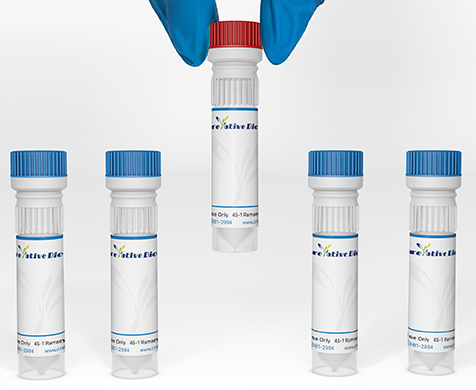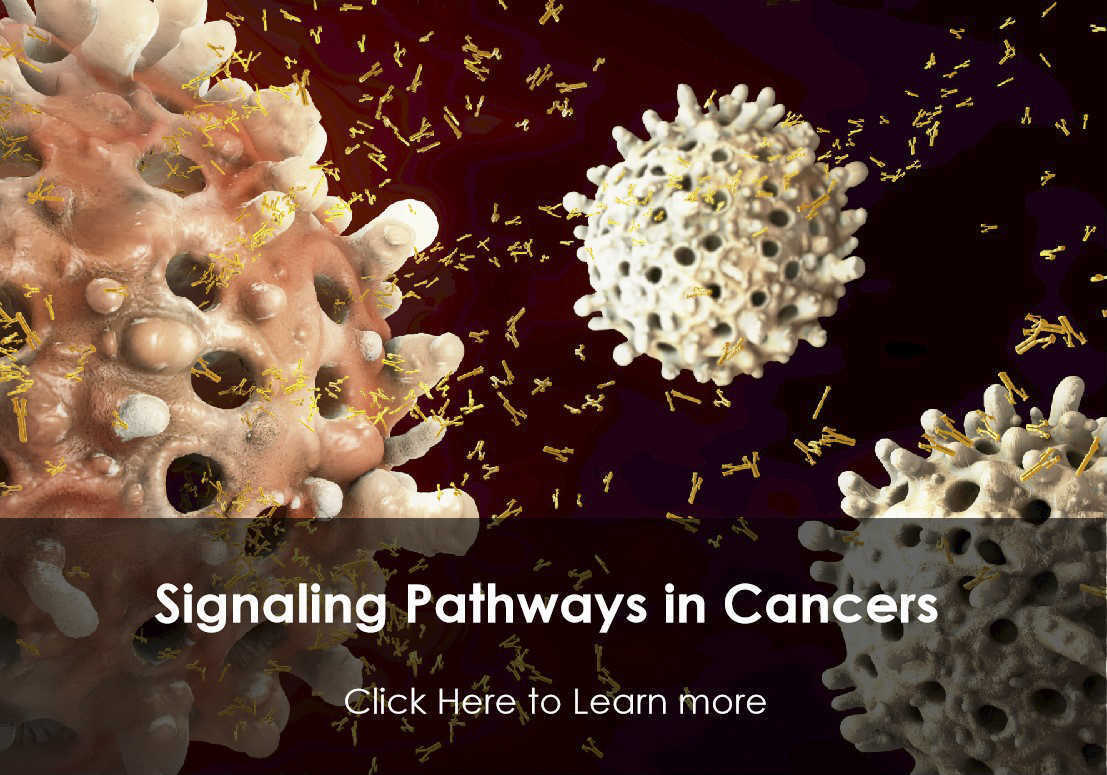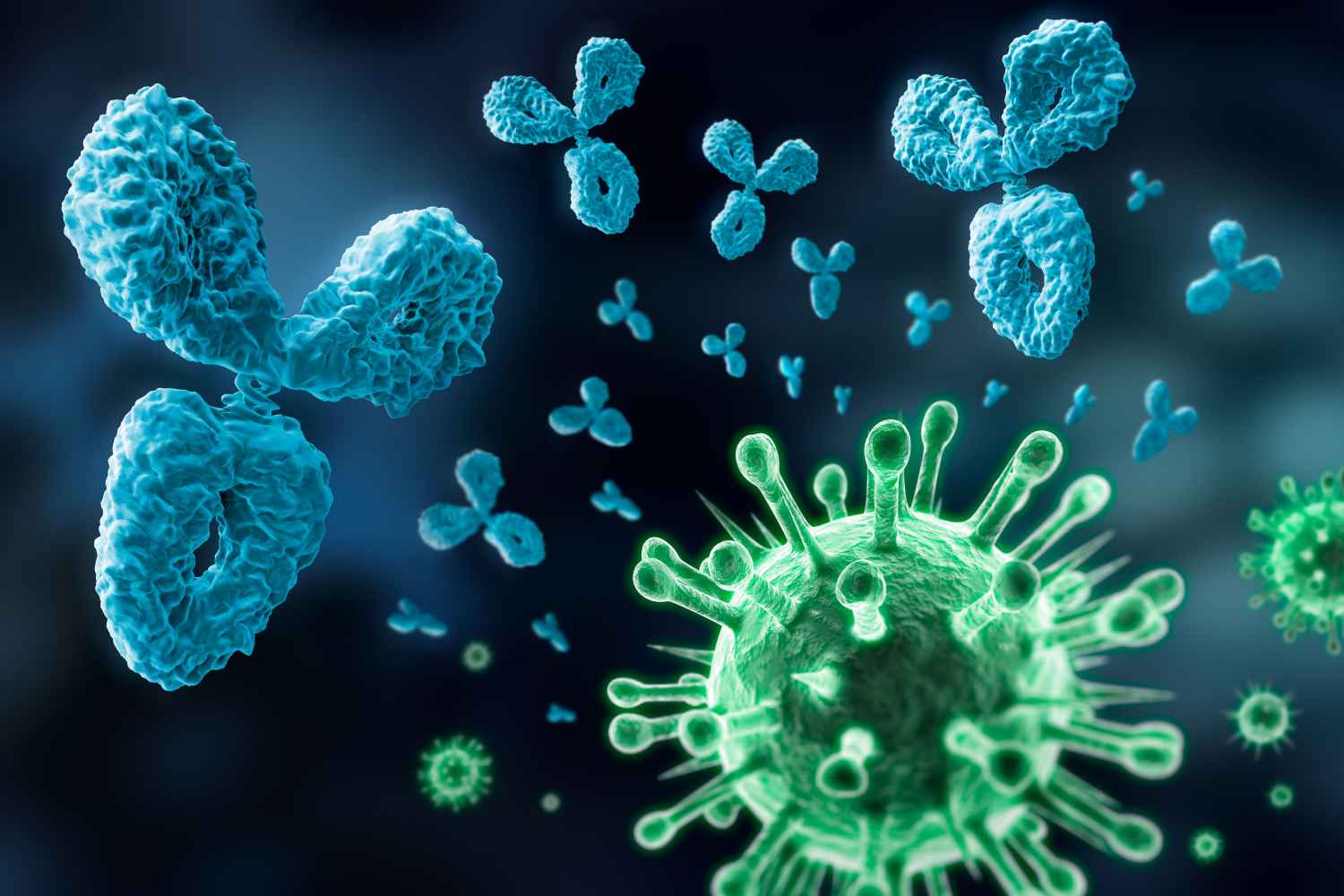STT3A
The protein encoded by this gene is a catalytic subunit of the N-oligosaccharyltransferase (OST) complex, which functions in the endoplasmic reticulum to transfer glycan chains to asparagine residues of target proteins. A separate complex containing a similar catalytic subunit with an overlapping function also exists. Multiple transcript variants encoding different isoforms have been found for this gene.
Full Name
STT3A, Catalytic Subunit Of The Oligosaccharyltransferase Complex
Function
Catalytic subunit of the oligosaccharyl transferase (OST) complex that catalyzes the initial transfer of a defined glycan (Glc3Man9GlcNAc2 in eukaryotes) from the lipid carrier dolichol-pyrophosphate to an asparagine residue within an Asn-X-Ser/Thr consensus motif in nascent polypeptide chains, the first step in protein N-glycosylation (PubMed:31831667, PubMed:34653363).
N-glycosylation occurs cotranslationally and the complex associates with the Sec61 complex at the channel-forming translocon complex that mediates protein translocation across the endoplasmic reticulum (ER). All subunits are required for a maximal enzyme activity. This subunit contains the active site and the acceptor peptide and donor lipid-linked oligosaccharide (LLO) binding pockets (By similarity).
STT3A is present in the majority of OST complexes and mediates cotranslational N-glycosylation of most sites on target proteins, while STT3B-containing complexes are required for efficient post-translational glycosylation and mediate glycosylation of sites that have been skipped by STT3A (PubMed:19167329).
N-glycosylation occurs cotranslationally and the complex associates with the Sec61 complex at the channel-forming translocon complex that mediates protein translocation across the endoplasmic reticulum (ER). All subunits are required for a maximal enzyme activity. This subunit contains the active site and the acceptor peptide and donor lipid-linked oligosaccharide (LLO) binding pockets (By similarity).
STT3A is present in the majority of OST complexes and mediates cotranslational N-glycosylation of most sites on target proteins, while STT3B-containing complexes are required for efficient post-translational glycosylation and mediate glycosylation of sites that have been skipped by STT3A (PubMed:19167329).
Biological Process
Biological Process co-translational protein modificationManual Assertion Based On ExperimentIMP:UniProtKB
Biological Process post-translational protein modificationManual Assertion Based On ExperimentIBA:GO_Central
Biological Process protein N-linked glycosylationManual Assertion Based On ExperimentIDA:ComplexPortal
Biological Process protein N-linked glycosylation via asparagineManual Assertion Based On ExperimentIMP:UniProtKB
Biological Process post-translational protein modificationManual Assertion Based On ExperimentIBA:GO_Central
Biological Process protein N-linked glycosylationManual Assertion Based On ExperimentIDA:ComplexPortal
Biological Process protein N-linked glycosylation via asparagineManual Assertion Based On ExperimentIMP:UniProtKB
Cellular Location
Endoplasmic reticulum
Endoplasmic reticulum membrane
Endoplasmic reticulum membrane
Involvement in disease
Congenital disorder of glycosylation 1W (CDG1W):
A form of congenital disorder of glycosylation, a multisystem disorder caused by a defect in glycoprotein biosynthesis and characterized by under-glycosylated serum glycoproteins. Congenital disorders of glycosylation result in a wide variety of clinical features, such as defects in the nervous system development, psychomotor retardation, dysmorphic features, hypotonia, coagulation disorders, and immunodeficiency. The broad spectrum of features reflects the critical role of N-glycoproteins during embryonic development, differentiation, and maintenance of cell functions.
Congenital disorder of glycosylation 1W, autosomal dominant (CDG1WAD):
A form of congenital disorder of glycosylation, a multisystem disorder caused by a defect in glycoprotein biosynthesis and characterized by under-glycosylated serum glycoproteins. Congenital disorders of glycosylation result in a wide variety of clinical features, such as defects in the nervous system development, psychomotor retardation, dysmorphic features, hypotonia, coagulation disorders, and immunodeficiency. The broad spectrum of features reflects the critical role of N-glycoproteins during embryonic development, differentiation, and maintenance of cell functions. CDG1WAD patients show variable skeletal anomalies, short stature, macrocephaly, and dysmorphic features. Some have impaired intellectual development. Additional features include increased muscle tone and muscle cramps.
A form of congenital disorder of glycosylation, a multisystem disorder caused by a defect in glycoprotein biosynthesis and characterized by under-glycosylated serum glycoproteins. Congenital disorders of glycosylation result in a wide variety of clinical features, such as defects in the nervous system development, psychomotor retardation, dysmorphic features, hypotonia, coagulation disorders, and immunodeficiency. The broad spectrum of features reflects the critical role of N-glycoproteins during embryonic development, differentiation, and maintenance of cell functions.
Congenital disorder of glycosylation 1W, autosomal dominant (CDG1WAD):
A form of congenital disorder of glycosylation, a multisystem disorder caused by a defect in glycoprotein biosynthesis and characterized by under-glycosylated serum glycoproteins. Congenital disorders of glycosylation result in a wide variety of clinical features, such as defects in the nervous system development, psychomotor retardation, dysmorphic features, hypotonia, coagulation disorders, and immunodeficiency. The broad spectrum of features reflects the critical role of N-glycoproteins during embryonic development, differentiation, and maintenance of cell functions. CDG1WAD patients show variable skeletal anomalies, short stature, macrocephaly, and dysmorphic features. Some have impaired intellectual development. Additional features include increased muscle tone and muscle cramps.
Topology
Cytoplasmic: 1-17
Helical: 18-38
Lumenal: 39-119
Helical: 120-138
Cytoplasmic: 139-140
Helical: 141-158
Lumenal: 159-169
Helical: 170-189
Cytoplasmic: 190-191
Helical: 192-206
Lumenal: 207-211
Helical: 212-228
Cytoplasmic: 229-233
Helical: 234-259
Lumenal: 260-267
Helical: 268-287
Cytoplasmic: 288-300
Helical: 301-321
Lumenal: 322-356
Helical: 357-379
Cytoplasmic: 380-385
Helical: 386-402
Lumenal: 403-406
Helical: 407-428
Cytoplasmic: 429-453
Helical: 454-473
Lumenal: 474-705
Helical: 18-38
Lumenal: 39-119
Helical: 120-138
Cytoplasmic: 139-140
Helical: 141-158
Lumenal: 159-169
Helical: 170-189
Cytoplasmic: 190-191
Helical: 192-206
Lumenal: 207-211
Helical: 212-228
Cytoplasmic: 229-233
Helical: 234-259
Lumenal: 260-267
Helical: 268-287
Cytoplasmic: 288-300
Helical: 301-321
Lumenal: 322-356
Helical: 357-379
Cytoplasmic: 380-385
Helical: 386-402
Lumenal: 403-406
Helical: 407-428
Cytoplasmic: 429-453
Helical: 454-473
Lumenal: 474-705
View more
Anti-STT3A antibodies
+ Filters
 Loading...
Loading...
Target: STT3A
Host: Mouse
Antibody Isotype: IgG1, κ
Specificity: Human
Clone: 4D4
Application*: WB, E
Target: STT3A
Host: Mouse
Antibody Isotype: IgG1, κ
Specificity: Human
Clone: CBXS-0809
Application*: E, WB, P
Target: STT3A
Host: Mouse
Antibody Isotype: IgG1, κ
Specificity: Human
Clone: CBXS-0808
Application*: SE, E, WB, P
Target: STT3A
Host: Mouse
Antibody Isotype: IgG1, κ
Specificity: Human
Clone: CBXS-5019
Application*: E, P, WB
Target: STT3A
Host: Mouse
Antibody Isotype: IgG1, κ
Specificity: Human
Clone: CBYY-I0909
Application*: E, IH, WB
More Infomation
Hot products 
-
Mouse Anti-ATP1B1 Recombinant Antibody (E4) (CBMAB-0463-LY)

-
Mouse Anti-ACVR1C Recombinant Antibody (V2-179685) (CBMAB-A1041-YC)

-
Mouse Anti-dsDNA Recombinant Antibody (22) (CBMAB-AP1954LY)

-
Mouse Anti-CTNND1 Recombinant Antibody (CBFYC-2414) (CBMAB-C2487-FY)

-
Mouse Anti-BrdU Recombinant Antibody (IIB5) (CBMAB-1038CQ)

-
Mouse Anti-BIRC7 Recombinant Antibody (88C570) (CBMAB-L0261-YJ)

-
Mouse Anti-BSN Recombinant Antibody (219E1) (CBMAB-1228-CN)

-
Mouse Anti-APOA1 Monoclonal Antibody (CBFYR0637) (CBMAB-R0637-FY)

-
Mouse Anti-CCNH Recombinant Antibody (CBFYC-1054) (CBMAB-C1111-FY)

-
Mouse Anti-APOH Recombinant Antibody (4D9A4) (CBMAB-A3249-YC)

-
Mouse Anti-DHFR Recombinant Antibody (D0821) (CBMAB-D0821-YC)

-
Mouse Anti-C5B-9 Recombinant Antibody (CBFYA-0216) (CBMAB-X0304-FY)

-
Rabbit Anti-Acetyl-Histone H3 (Lys36) Recombinant Antibody (V2-623395) (CBMAB-CP0994-LY)

-
Mouse Anti-BPGM Recombinant Antibody (CBYY-1806) (CBMAB-2155-YY)

-
Mouse Anti-CD24 Recombinant Antibody (HIS50) (CBMAB-C10123-LY)

-
Mouse Anti-BRCA2 Recombinant Antibody (CBYY-0790) (CBMAB-0793-YY)

-
Rat Anti-(1-5)-α-L-Arabinan Recombinant Antibody (V2-501861) (CBMAB-XB0003-YC)

-
Mouse Anti-CD19 Recombinant Antibody (CBXC-1224) (CBMAB-C1491-CQ)

-
Mouse Anti-ATP1B3 Recombinant Antibody (1E9) (CBMAB-A4021-YC)

-
Mouse Anti-BAX Recombinant Antibody (CBYY-0216) (CBMAB-0217-YY)

For Research Use Only. Not For Clinical Use.
(P): Predicted
* Abbreviations
- AActivation
- AGAgonist
- APApoptosis
- BBlocking
- BABioassay
- BIBioimaging
- CImmunohistochemistry-Frozen Sections
- CIChromatin Immunoprecipitation
- CTCytotoxicity
- CSCostimulation
- DDepletion
- DBDot Blot
- EELISA
- ECELISA(Cap)
- EDELISA(Det)
- ESELISpot
- EMElectron Microscopy
- FFlow Cytometry
- FNFunction Assay
- GSGel Supershift
- IInhibition
- IAEnzyme Immunoassay
- ICImmunocytochemistry
- IDImmunodiffusion
- IEImmunoelectrophoresis
- IFImmunofluorescence
- IHImmunohistochemistry
- IMImmunomicroscopy
- IOImmunoassay
- IPImmunoprecipitation
- ISIntracellular Staining for Flow Cytometry
- LALuminex Assay
- LFLateral Flow Immunoassay
- MMicroarray
- MCMass Cytometry/CyTOF
- MDMeDIP
- MSElectrophoretic Mobility Shift Assay
- NNeutralization
- PImmunohistologyp-Paraffin Sections
- PAPeptide Array
- PEPeptide ELISA
- PLProximity Ligation Assay
- RRadioimmunoassay
- SStimulation
- SESandwich ELISA
- SHIn situ hybridization
- TCTissue Culture
- WBWestern Blot

Online Inquiry





